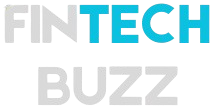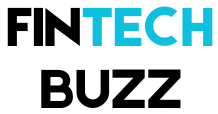Introduction
The fintech industry has seen tremendous growth and innovation over the past decade, with new technologies transforming the way we manage money, invest, and interact with financial services. As we look ahead to 2025, several trends are poised to shape the next wave of fintech disruption. From artificial intelligence to blockchain and beyond, the future of fintech promises to bring even more exciting changes that will redefine the financial landscape. Let’s take a look at the top fintech trends to watch in 2025.
The Rise of Decentralized Finance (DeFi)
Decentralized finance, or DeFi, has been making waves in recent years, and by 2025, it’s expected to have a much larger impact. DeFi eliminates the need for traditional intermediaries like banks, offering financial services through blockchain-based platforms. By using smart contracts, DeFi platforms allow users to lend, borrow, trade, and invest without relying on centralized institutions.
What to expect in 2025:
- A broader adoption of DeFi platforms across both retail and institutional investors.
- Increased regulation and oversight as governments explore how to regulate this fast-growing sector.
- More DeFi innovations that offer decentralized alternatives to traditional banking services, such as savings, loans, and insurance.
Artificial Intelligence (AI) and Machine Learning in Finance
AI and machine learning have already started reshaping fintech, but their role will grow even more significant by 2025. AI-powered tools can analyze massive amounts of data to identify patterns, predict trends, and offer personalized financial advice. In wealth management, AI-driven robo-advisors are expected to gain popularity, offering low-cost investment solutions to both retail and institutional clients.
What to expect in 2025:
- More advanced AI algorithms capable of offering hyper-personalized financial recommendations.
- AI-driven tools to improve fraud detection and cybersecurity in fintech apps.
- Increased use of AI for credit scoring and underwriting, making loans more accessible to underserved individuals.
The Growth of Embedded Finance
Embedded finance refers to the integration of financial services directly into non-financial platforms. For example, you might buy a product and be offered financing options right at checkout, or use a ride-sharing app that allows you to make payments, buy insurance, or invest—all from within the same platform. This trend is making financial services more seamless and accessible for consumers.
What to expect in 2025:
- More industries—such as retail, healthcare, and travel—embedding financial services into their platforms.
- The rise of APIs that enable businesses to easily integrate financial services, such as payments, lending, or insurance, into their existing offerings.
- Consumer behavior shifts toward increasingly relying on integrated financial experiences rather than using traditional banking channels.
Central Bank Digital Currencies (CBDCs)
Central Bank Digital Currencies are digital versions of national currencies issued by governments and central banks. While many countries are still exploring the idea, by 2025, it’s likely that CBDCs will be rolled out in some form. These digital currencies could complement or replace cash, making payments more efficient and secure. CBDCs will also potentially help governments track transactions more effectively, reducing money laundering and fraud.
What to expect in 2025:
- Several countries may launch or pilot CBDCs, with China’s digital yuan and the EU’s digital euro potentially leading the way.
- Wider adoption of CBDCs for everyday transactions, such as online purchases and peer-to-peer transfers.
- Increased discussion around the regulatory implications and privacy concerns surrounding digital currencies.
Neo-Banking: The Digital-Only Banks
The rise of neo-banks—digital-only banks with no physical branches—has already begun, and by 2025, these banks will likely play a bigger role in the financial ecosystem. Neo-banks provide a fully online banking experience, offering everything from savings accounts to loans, often with lower fees than traditional banks.
What to expect in 2025:
- Increased competition between traditional banks and neo-banks, as more consumers embrace the convenience of digital-only banking.
- Further innovations in banking, including ultra-customized products, faster payments, and real-time financial insights.
- A greater focus on user experience and customer-centric services as neo-banks strive to differentiate themselves.
Financial Inclusion and Digital Identity Solutions
One of fintech’s most exciting promises is financial inclusion, bringing banking and financial services to the unbanked and underserved populations. Digital identity solutions, which use biometric data, blockchain, and AI to verify identities, will play a critical role in this movement by making it easier for individuals to access financial services online.
What to expect in 2025:
- Widespread adoption of digital identity systems, making it easier for people in emerging markets to open bank accounts and access credit.
- Continued growth of mobile-first fintech solutions that target underbanked populations in developing countries.
- Governments and fintech companies working together to build inclusive financial systems for those who have historically been excluded from traditional banking.
Digital Assets and Tokenization of Real-World Assets
In 2025, the concept of digital assets will extend beyond cryptocurrencies. Tokenization—the process of converting physical or traditional assets like real estate, stocks, or even art into digital tokens—will make investing in these assets more accessible and liquid.
What to expect in 2025:
- A surge in tokenized assets, allowing investors to own fractional shares of high-value assets like real estate, fine art, or private equity.
- More platforms enabling retail investors to access tokenized versions of traditional assets, democratizing investment opportunities.
- Increased regulatory frameworks around tokenized assets to ensure safety, transparency, and security.
Sustainable and Green Fintech
Sustainability will continue to be a key focus for fintech companies, especially as consumers demand more eco-conscious financial products. Green fintech refers to innovations in finance that promote sustainability, such as ESG (Environmental, Social, Governance) investing, green bonds, and carbon offset tracking.
What to expect in 2025:
- The rise of fintech solutions dedicated to ESG investing, helping consumers align their financial portfolios with their sustainability goals.
- Increased offerings of sustainable finance products such as green bonds, sustainable ETFs, and impact investing.
- A stronger focus on transparency in the environmental impact of investment portfolios and company practices.
Conclusion
The fintech industry is poised to continue its rapid evolution in 2025, driven by technology, innovation, and an ever-increasing demand for personalized and accessible financial services. As new trends like decentralized finance, AI-driven solutions, and digital currencies take center stage, we’ll likely see a transformation of how we think about, manage, and interact with money. For both consumers and businesses, staying ahead of these trends will be key to embracing the future of finance.
#FintechTrends #FutureOfFinance #Fintech2025 #DigitalBanking #DeFi #BlockchainInnovation #AIinFintech #Neobanks


